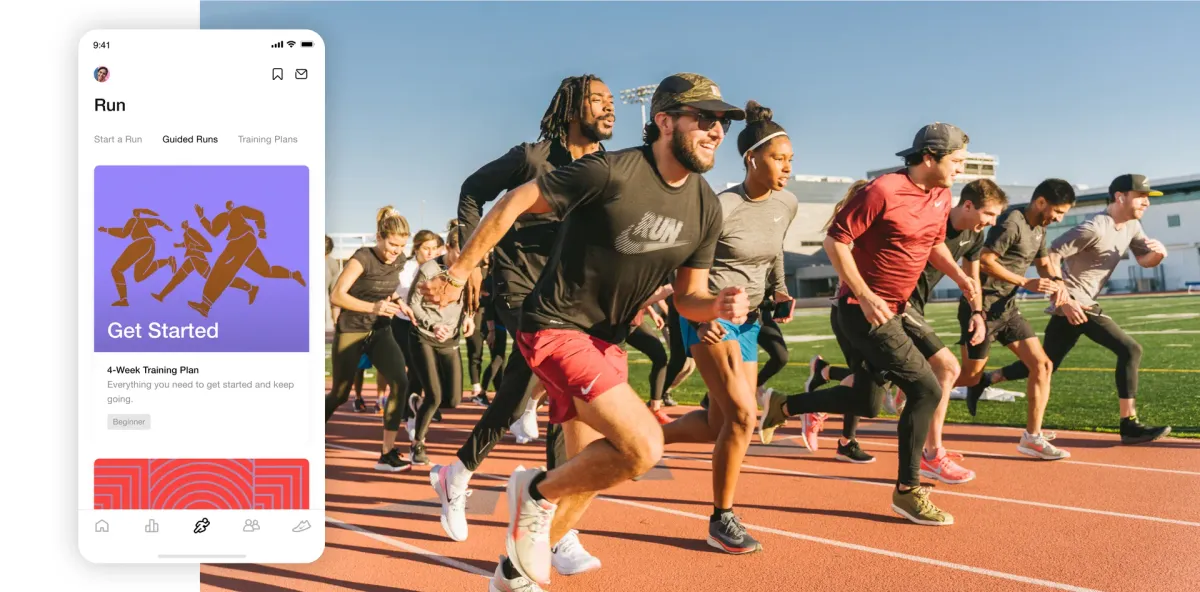The Science of Persuasive Design: Lessons from My Running Journey
When my running app couldn't keep pace with my real-life challenges, I discovered the science behind why persuasive technology needs to meet us where we are—not where it thinks we should be.

A few months ago, I decided to get back into running after a long hiatus. I downloaded the Nike Run Club (NRC) app, based on the advice of friend and its structured training plans and guided runs. As someone who prefers an organized approach, I enrolled in the NRC half marathon training program, despite not having signed up for an actual race.
Unfortunately, my enthusiasm didn't last. After seven weeks, I was feeling run down and sore. Travel disrupted my 5-runs-per-week schedule, old injuries resurfaced, and it became easy to quit without a concrete race goal.
The Science of Persuasive Technology
My experience with NRC highlights a crucial issue in persuasive technology design: the need for personalization. A study by Oyebode et al. published in the proceedings of CHI '21 explores this topic, investigating "how to effectively tailor persuasive and behavior change systems to individual users based on their current stage of change and motivation."
The researchers examined five common persuasive strategies: self-monitoring, social role, praise, reminder, and suggestion. They found that the effectiveness of these strategies varies significantly depending on an individual's stage of change, as defined by the Transtheoretical Model (TTM) of behavior change.
According to the TTM, individuals progress through five stages when changing behavior: pre-contemplation, contemplation, preparation, action, and maintenance. The study revealed that "people's current stage of change plays a significant role in the perceived persuasiveness of different strategies and that the strategies motivate for different reasons and through different mechanisms depending on individual's stage of change."
Applying the Research to NRC
Reflecting on my experience with the NRC app through the lens of Oyebode et al.'s research, several insights emerge:
- Misalignment of Stages:
The app treated me as if I were in the action stage, ready for an intensive training regimen. However, I was likely in the preparation or early action stage, still needing more support and flexibility. This misalignment could explain why the app's approach didn't resonate with me long-term. - Persuasive Strategies:
The study suggests that for individuals in the preparation stage, "designers should employ self-monitoring, praise, reminder, and suggestion strategies."- Self-monitoring: NRC excelled here, offering detailed tracking of runs, pace, and distance.
- Praise: The app provided some encouragement in the form of post-run messages. But, these weren't personalized to my specific progress or challenges.
- Reminders: While NRC sent notifications, they weren't adaptive to my changing schedule or motivation levels.
- Suggestions: The app offered a rigid training plan rather than flexible, context-aware suggestions.
- Lack of Adaptability:
One of the key findings from the study is the importance of adapting strategies as users progress or regress. NRC's inability to adjust when I faced challenges (travel, nagging injuries) ultimately led to my disengagement. - Motivation and Confidence:
NRC could have better supported my confidence by offering more achievable milestones or alternative workouts when I was struggling to stay on the designed plan. - Context Awareness:
The research emphasizes the importance of "timely, context-aware" interventions. NRC's lack of awareness and responsiveness to my travel schedule or physical changes demonstrates a missed opportunity for context-aware support. - Goal Setting:
While NRC allowed me to set a half-marathon goal, I wasn't able to tell it that I hadn't signed up for a specific race. The app could have benefited from more flexible goal-setting options, allowing users to define success in various ways beyond race completion.
By applying the insights from Oyebode et al.'s research, we can see that NRC, while strong in some areas like self-monitoring, missed opportunities to provide a more personalized, adaptive experience. A more effective version of the app would assess a user's stage of change, offer tailored strategies based on that stage, and continuously adapt as the user progresses or faces setbacks. This approach could have kept me engaged with the app and my running goals for longer.
Implications for Digital Product Design
For digital product strategists and designers, this research has significant implications. It suggests that persuasive systems should be designed to:
- Assess a user's current stage of change
- Tailor strategies based on that stage
- Adapt as users progress or regress
As Oyebode et al. note, "To appeal to a wider audience, persuasive systems aimed at promoting behavior by building confidence should be designed to offer suggestions or recommendations to users as they interact with the system. The suggestions should be timely, context-aware, and ultimately move users closer to their goals."
My experience with NRC could have been improved by incorporating more flexible goal-setting, adaptive planning based on my progress and setbacks, and personalized reminders tailored to my specific challenges.
This study highlights the importance of understanding user psychology when designing persuasive systems. For future versions of fitness apps like NRC, and for any persuasive technology, the main lesson is clear: personalization matters. The most effective systems will be those that can accurately gauge a user's stage of change and adapt their strategies accordingly, offering the right kind of motivation at the right time.
To be honest, I haven't completely stopped running. I still run periodically, but I'm not following a strict plan or using the NRC app anymore. There's less structure to my runs now, which has its pros and cons. The summer heat is also a factor - I'm trying to avoid heat stroke while still staying active. When fall arrives and the weather cools down, I'll probably sign up for another training plan. This time, I'll approach it with a better understanding of how to manage my training and what I need to stay motivated. Maybe by then, NRC will have incorporated some of these research insights, making it easier for users like me to stick with our running goals long-term.
